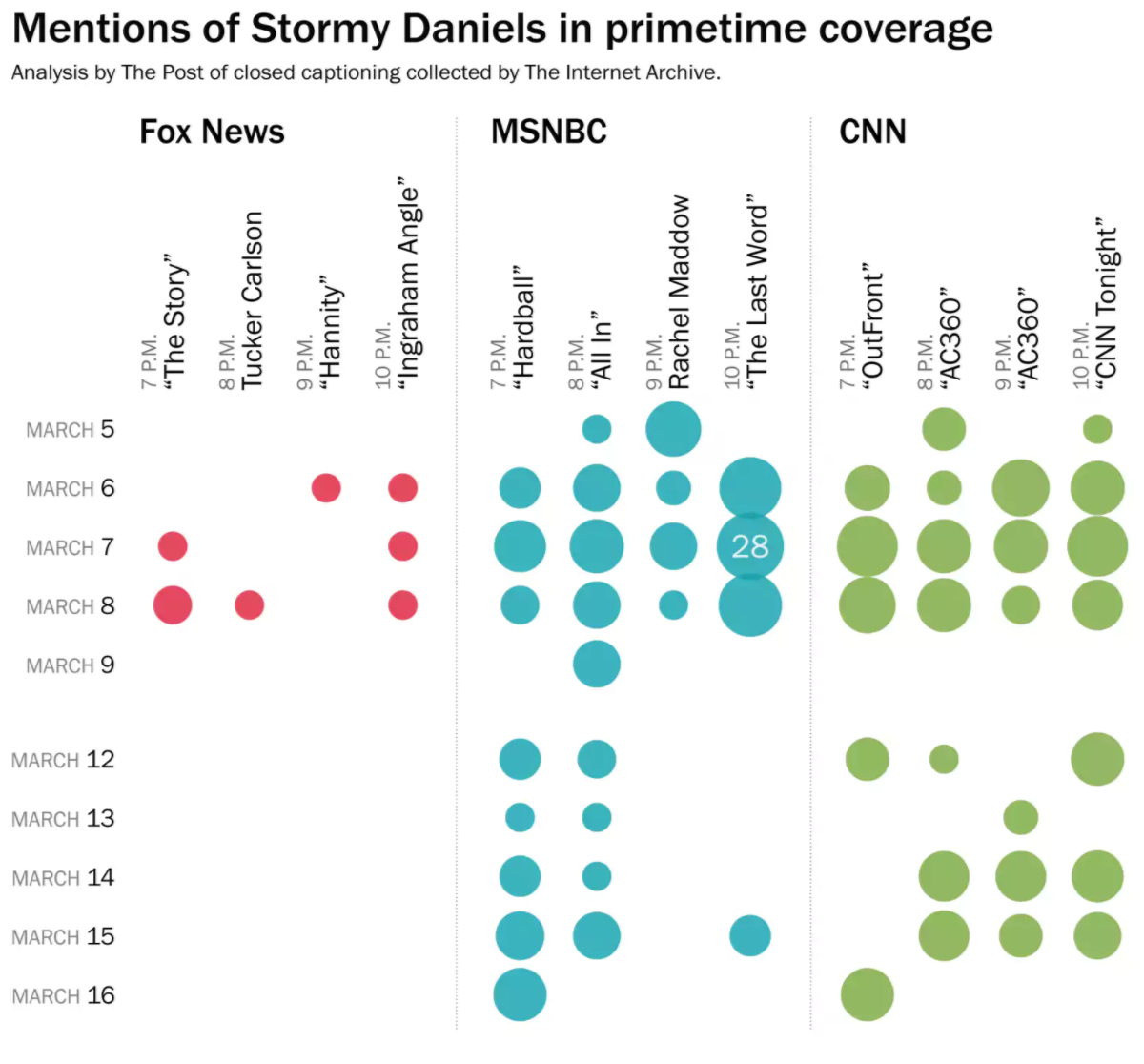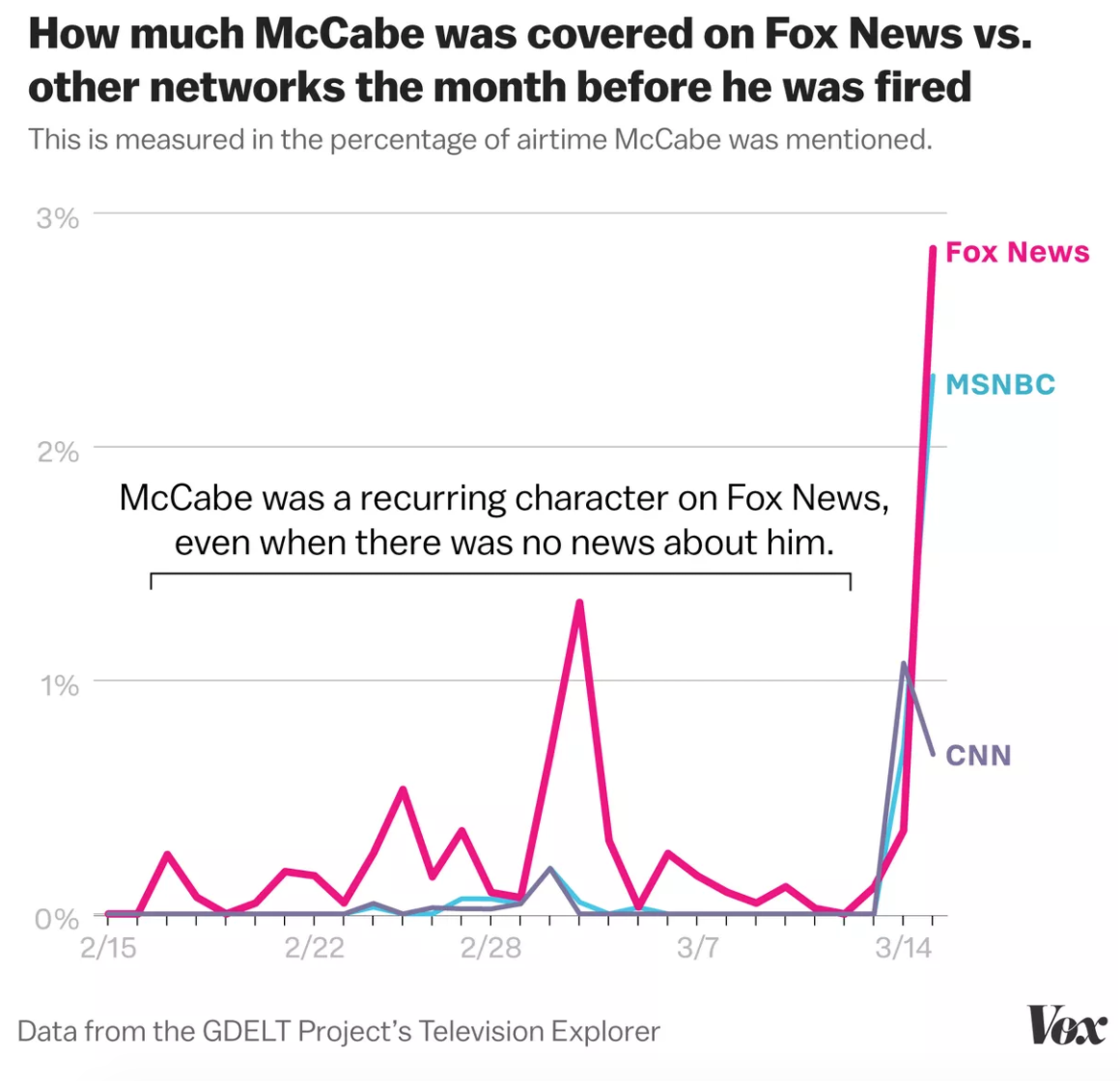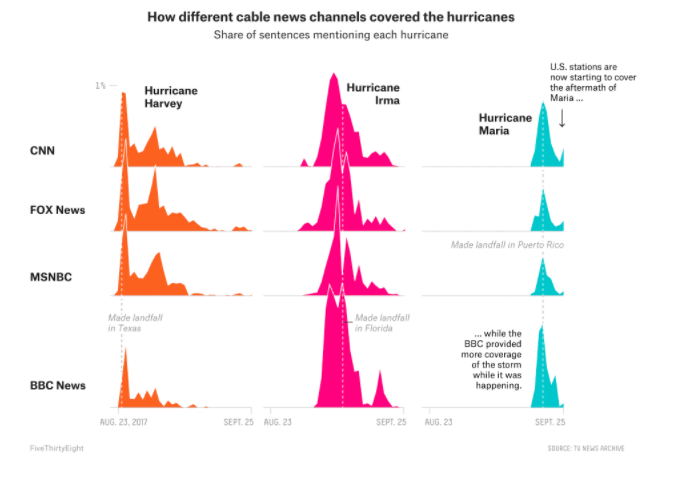A round up on what’s happening at the TV News Archive by Katie Dahl and Nancy Watzman.
This week we bring you analyses of cable TV news coverage and fact-checks of recent statements by President Donald Trump on immigration and his proposed wall on the border with Mexico.
Vox & Post turn TV news captions into media analysis
Vox’s Alvin Chang and The Washington Post’s Philip Bump continue to turn TV News Archive caption data, via Television Explorer, into analyses of current news. Chang analyzes cable TV network coverage of the March for Our Lives, an anti-gun violence demonstration, reporting that on Fox News, “There was a massive spike in mentions of the “Second Amendment” or “Constitution” during the peak of the march, and most of those mentions came from pundits and guests on the network.”

Source: Vox
Bump’s piece examines mentions of Hillary Clinton on cable TV news networks compared to those of Stormy Daniels, the adult entertainer involved in a legal dispute with the president. He finds that Fox News mentions Clinton the most, while CNN features more coverage of Daniels.

Source: The Washington Post
Fact-Check: We’ve started building the wall (Mostly False/Three Pinocchios)
During a press conference with the presidents of Estonia, Latvia, and Lithuania, President Donald Trump talked about his proposed border wall between the United States and Mexico: “We have to have strong borders. We need the wall. We’ve started building the wall, as you know, we have a $1.6 billion toward building the wall and fixing existing wall that’s falling down, it was never appropriate in the first place.”
The funding the president references comes from a spending bill recently passed by Congress. The omnibus “bill included $1.6 billion for some projects at the border, but none of that can be used toward the border wall promised during the presidential campaign.” For PolitiFact, Miriam Valverde rates the president’s claim “Mostly False.”
At The Washington Post’s Fact-Checker, Glenn Kessler gives the same claim “three Pinocchios”:
The White House failed miserably to achieve its objectives on funding for a border wall, receiving relative peanuts. It sought $25 billion, but ended up with just 5 percent of that. Moreover, the money came with strings attached so that it could only be used for fencing, not the “great” and “beautiful wall” promised by Trump.
In Orwellian fashion, fences have now become walls. Even then, the president has only secured enough money to pay for one-tenth of the new fence/wall he has sought.
Fact-Check: Caravans of people are coming to cross the U.S.-Mexico border (Half True)
Just after Fox News aired a segment on a caravan of people from Central America making its way through Mexico toward the United States, the president wrote on Twitter:
“Half True,” writes W. Gardner Shelby for PolitiFact: “President Trump tweeted that caravans of immigrants are coming to the Mexico-U.S. border… We confirmed that a caravan of 1,200 to 1,500 people from Central America–not caravans–was in southern Mexico, about 900 miles from the Rio Grande, when Trump tweeted. Also, accounts vary on whether all participants are bound to enter the U.S. An organizer estimated that most of the people intend to remain in Mexico.”
Reporting for FactCheck.org, Robert Farley, Eugene Kiely and Lori Robertson write “Trump’s messages included muddled and inaccurate claims.” They summarize with the following bullet points:
-
Contrary to Trump’s assertion, there is no “liberal (Democrat)” law requiring the “Catch & Release” of people caught illegally crossing the border. There are court cases and laws that require some unaccompanied children, families and asylum-seekers to be released in the U.S., pending an immigration hearing. But it’s a stretch to blame those entirely on Democrats.
-
Trump said “big flows of people” are illegally entering the U.S. from Mexico “to take advantage of DACA.” In fact, current border-crossers are not eligible for the Deferred Action for Childhood Arrivals program.
-
Trump said that “caravans” of people were coming to the Southwest border and that Mexico “must stop them.” The caravan, a yearly demonstration, was organized by the activist group Pueblo Sin Fronteras, which says the people walking in the caravan have “a lot of intentions,” with some wanting to stay in Mexico. The caravan is now in southern Mexico, more than 800 miles from the U.S. border.
Follow us @tvnewsarchive, and subscribe to our biweekly newsletter here.




















